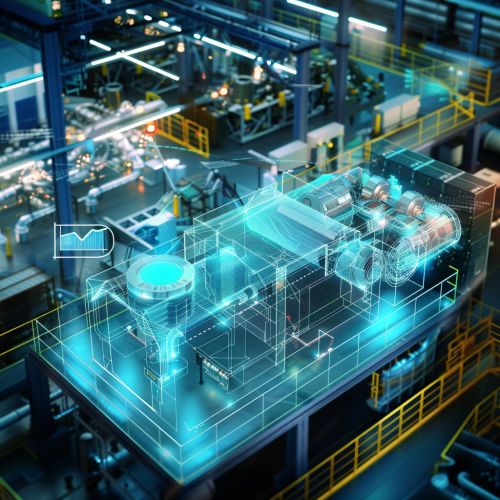Digital Twin
Overview
A Digital Twin is a digital replica of a physical entity, system, or process. It serves as a bridge between the physical and digital worlds, allowing for the analysis of data and the monitoring of systems to head off problems before they occur, prevent downtime, develop new opportunities, and even plan for the future by using simulations. Digital Twins are used in various industries including manufacturing, aerospace, automotive, and infrastructure.


History
The concept of the Digital Twin has been around since 2002, when it was first introduced by Dr. Michael Grieves at the University of Michigan. However, it wasn't until the advent of the Internet of Things (IoT) that the concept became feasible on a large scale. The IoT's ability to connect physical objects to the digital world has made it possible to create digital twins of complex systems, such as factories or cities.
Functionality
A Digital Twin functions by collecting real-time data from its physical counterpart through sensors. This data is then processed and analyzed, often using Artificial Intelligence (AI) and Machine Learning (ML) algorithms. The resulting insights can be used to optimize the operation of the physical entity, predict future behavior, or simulate different scenarios.
Types of Digital Twins
There are three main types of Digital Twins: the Product Twin, the Production Twin, and the Performance Twin.
Product Twin
The Product Twin is a digital representation of a product, often used in the design and development phase. It allows for virtual testing and optimization before the physical product is manufactured.
Production Twin
The Production Twin is a digital replica of a production process or factory. It can be used to optimize production processes, predict maintenance needs, and simulate the impact of changes in the production line.
Performance Twin
The Performance Twin is a digital twin of a product in use. It collects data from the product in real-time, allowing for continuous optimization and predictive maintenance.
Benefits and Challenges
Digital Twins offer numerous benefits, including improved efficiency, reduced downtime, and the ability to predict and prevent issues before they occur. However, they also present several challenges, such as the need for high-quality data, the complexity of creating accurate digital replicas, and issues related to data security and privacy.
Future Trends
The use of Digital Twins is expected to grow in the coming years, driven by advancements in IoT, AI, and ML technologies. Future trends include the development of Digital Twin networks, the integration of Digital Twins with Blockchain technology for improved data security, and the use of Digital Twins in new areas such as healthcare and urban planning.
